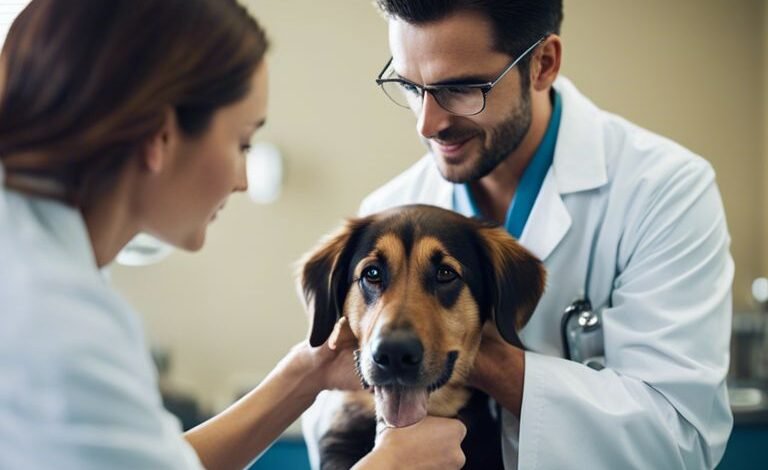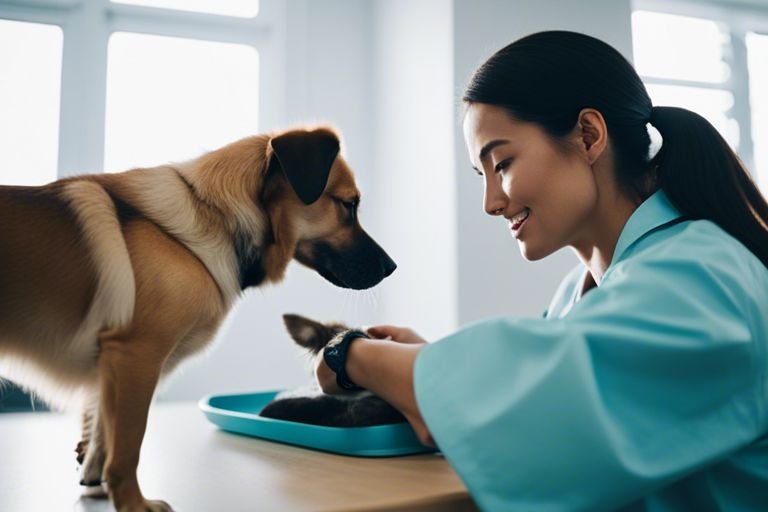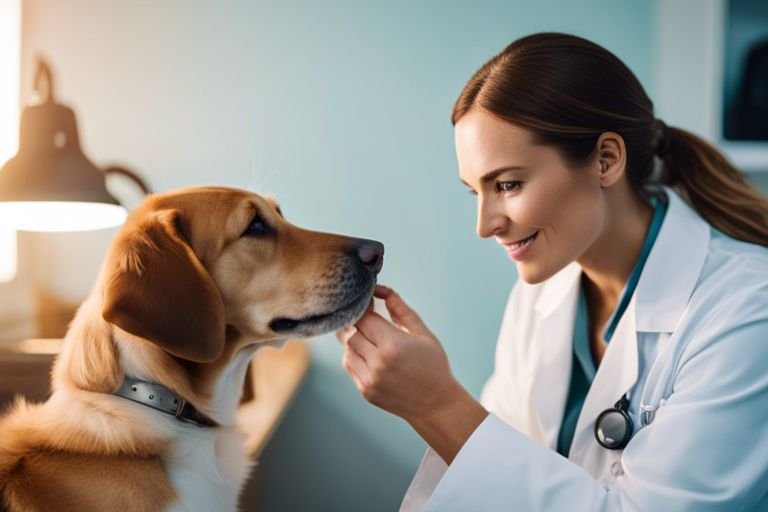How To Prevent Dog Ear Yeast Infection – Essential Tips For Pet Owners

Yeast. Your furry companion may be suffering from a dog ear yeast infection, causing discomfort and irritation. Identifying the symptoms early and knowing how to properly treat it can make a huge difference in your dog’s health and well-being. In this guide, you will learn how to recognize the signs of a yeast infection in your dog’s ears and the steps you can take to effectively treat it at home.
Key Takeaways:
- Symptoms: Some common symptoms of a dog ear yeast infection include scratching at the ears, redness or swelling, a strong odor coming from the ears, and dark discharge.
- Diagnosis: A veterinarian can diagnose a dog ear yeast infection by examining a sample of ear discharge under a microscope to look for the presence of yeast organisms.
- Treatment: Treatment for a dog ear yeast infection typically involves cleaning the ears thoroughly, using prescribed ear drops or ointments, and administering oral medications if necessary.
- Prevention: Preventing dog ear yeast infections can be done by cleaning your dog’s ears regularly, ensuring proper ear hygiene, and keeping your dog’s ears dry after swimming or bathing.
- Consult a Vet: If you suspect your dog has a yeast infection in the ears, it is important to consult a veterinarian for proper diagnosis and treatment to prevent the infection from getting worse.

Understanding Dog Ear Yeast Infections
What is a Yeast Infection?
The first step in being able to spot and treat a dog ear yeast infection is understanding what exactly it is. Yeast infections in dogs occur when there is an overgrowth of yeast, a type of fungus, in the ears. This can lead to irritation, inflammation, and discomfort for your furry friend.
Common Causes of Yeast Infections in Dogs
Common causes of yeast infections in dogs’ ears include allergies, moisture or trapped water in the ears, a weakened immune system, or ear anatomy that traps debris and wax. If left untreated, yeast infections can become chronic and lead to more severe issues, so it’s important to address them promptly.
Yeast thrives in warm, moist environments, making dogs with floppy ears more susceptible to developing infections. Additionally, dogs that swim frequently or have underlying health conditions may be more prone to yeast overgrowth.
Symptoms to Watch Out For
With a dog ear yeast infection, you may notice symptoms such as redness, swelling, a foul odor, discharge, itching, and shaking or tilting of the head. These symptoms can be uncomfortable for your furry companion and may indicate the presence of a yeast infection that needs to be treated.
Causes of Yeast Infections can be controlled and prevented by keeping your dog’s ears clean and dry, especially after swimming or baths. Regular ear cleaning can help remove excess moisture and debris that can contribute to yeast overgrowth. If you suspect your dog has a yeast infection, it’s important to consult your veterinarian for proper diagnosis and treatment.
How to Identify a Dog Ear Yeast Infection
Visual Signs of Infection
While dog ear yeast infections can be uncomfortable for your furry friend, they are typically easy to identify visually. One of the most common signs is a thick, dark brown discharge in your dog’s ears. This discharge may have a distinct yeasty odor that is different from normal ear wax. Additionally, you may notice redness and swelling in the ears, indicating an infection.
Behavioral Changes to Look Out For
There’s a good chance that you will also notice some behavioral changes in your dog if they have a yeast infection in their ears. You may observe them scratching or pawing at their ears more frequently than usual. Your dog may also shake their head frequently or tilt it to one side. These behaviors are often signs of discomfort and can indicate an ear infection.
A dog with an ear yeast infection may also show signs of pain when you touch or examine their ears. If your dog seems more irritable or sensitive around their ears, it could be a sign that something is bothering them.
Diagnostic Tests Your Veterinarian May Use
A veterinarian may perform a thorough examination of your dog’s ears to look for signs of a yeast infection. They may take a sample of the discharge from the ears to examine under a microscope. This can help confirm the presence of yeast or other pathogens causing the infection. In some cases, your vet may also recommend a bacterial culture to determine the exact cause of the infection.
Yeast infections in dogs’ ears can often be diagnosed based on the appearance of the discharge and other symptoms. However, in more severe or chronic cases, your veterinarian may recommend additional tests to rule out other possible causes of the infection.
For instance
For instance, your vet may suggest blood tests or allergy testing to determine if an underlying condition is contributing to the recurring yeast infections. By identifying and addressing any predisposing factors, you can help prevent future ear infections in your furry friend.

Factors That Contribute to Dog Ear Yeast Infections
Not all dogs are prone to ear yeast infections, but certain factors can increase the likelihood of your furry friend developing this uncomfortable condition. Understanding these factors can help you take preventive measures and keep your dog’s ears healthy and happy. Recognizing the signs of a dog ear yeast infection is crucial; for more information, you can check out Clinical Signs of a Dog Ear Yeast Infection.
Allergies and Skin Conditions
While allergies and skin conditions may not directly cause dog ear yeast infections, they can create an environment in your dog’s ears that is more conducive to yeast overgrowth. Dogs with allergies or skin issues tend to scratch their ears more frequently, leading to irritation and moisture buildup, which can encourage yeast growth.
Poor Ear Hygiene
One of the primary factors contributing to dog ear yeast infections is poor ear hygiene. If you neglect regular ear cleaning for your pup, debris, wax, and moisture can accumulate in the ears, creating a perfect breeding ground for yeast and bacteria.
Dietary Factors
Yeast thrives on sugar, so a diet high in carbohydrates can promote yeast growth in your dog’s body. Certain food sensitivities or allergies may also lead to inflammation in the gut, weakening the immune system and making your dog more susceptible to yeast infections. To help prevent yeast overgrowth, consider feeding your dog a balanced diet with limited carbohydrates and suitable for their specific dietary needs.
Environmental Factors
There’s a range of environmental factors that can contribute to dog ear yeast infections. Moisture from swimming or bathing, humid weather conditions, and even using improper ear cleaning solutions can all play a role in disrupting the delicate balance in your dog’s ears and potentially leading to yeast overgrowth.
Allergies
If your dog has allergies, they may be more prone to developing ear yeast infections. Allergies can cause inflammation in the ears, making them a welcoming environment for yeast to thrive. Keeping your dog’s allergies under control with the help of your veterinarian can help reduce the risk of yeast infections.
How to Treat a Dog Ear Yeast Infection
Now, when it comes to treating a dog ear yeast infection, there are several approaches you can take to help your furry friend feel better. The treatment will depend on the severity of the infection and your veterinarian’s recommendations. Here are some common ways to treat a dog ear yeast infection:
Topical Treatments and Medications
Assuming your vet prescribes them, topical antifungal medications can be applied directly to your dog’s ears to help eliminate the yeast infection. These medications may come in the form of ointments, drops, or sprays. Make sure to follow your vet’s instructions carefully when applying these treatments to ensure the best results for your dog.
Natural Remedies and Home Care
To complement medical treatments, there are natural remedies and home care practices that can help soothe your dog’s ear discomfort. Cleaning your dog’s ears with a gentle, veterinarian-approved cleanser can help remove excess yeast and debris. Additionally, natural remedies such as diluted apple cider vinegar or coconut oil may help create an environment in the ear that is less conducive to yeast growth. To further support your dog’s recovery, you can also try adding probiotics to their diet. Probiotics help promote a healthy balance of bacteria in the body, which can be beneficial in fighting off yeast infections. You can find probiotic supplements specifically formulated for dogs at pet stores or consult with your vet for recommendations.
Dietary Changes to Support Recovery
Assuming your veterinarian recommends it, making dietary changes can also play a role in treating a dog ear yeast infection. A diet high in carbohydrates and sugars can contribute to yeast overgrowth, so switching to a grain-free, low-carb diet may help starve the yeast. Opt for high-quality, hypoallergenic dog food with limited ingredients to support your dog’s overall health and immune system. Another important aspect of dietary changes is ensuring your dog is adequately hydrated. Providing fresh, clean water at all times can help flush out toxins and support your dog’s immune system in fighting off the yeast infection. Be mindful of, always consult with your veterinarian before making any significant changes to your dog’s diet.
Tips for Preventing Future Infections
Regular Ear Cleaning and Maintenance
Preventing future ear yeast infections in your dog starts with regular ear cleaning and maintenance. Make it a habit to inspect your dog’s ears weekly for any signs of redness, swelling, or unusual discharge. Use a vet-approved ear cleaner to gently clean your dog’s ears, being careful not to probe too deeply into the ear canal.
- Clean your dog’s ears weekly
- Use a vet-approved ear cleaner
- Inspect your dog’s ears for any signs of infection
This simple routine can help prevent the buildup of excess moisture and debris that can contribute to the growth of yeast in your dog’s ears.
Managing Allergies and Skin Conditions
To prevent future ear yeast infections, it’s important to address any underlying allergies or skin conditions that may be causing irritation in your dog’s ears. Allergies to pollen, dust, or certain foods can lead to inflammation and itching in the ears, creating a hospitable environment for yeast to thrive.
Avoiding potential allergens, providing a balanced diet, and using hypoallergenic grooming products can help manage allergies and reduce the risk of recurring yeast infections in your dog’s ears.
Boosting Your Dog's Immune System
Your dog’s immune system plays a crucial role in fighting off yeast infections and other health issues. To boost your dog’s immune system, make sure they are getting proper nutrition with a balanced diet high in quality proteins and crucial nutrients.
Regular exercise, plenty of fresh water, and supplements like probiotics can also help support your dog’s immune system and reduce the likelihood of developing ear yeast infections.

When to Seek Professional Help
Unlike mild cases of ear infections, a severe dog ear yeast infection may require professional help. If you notice the infection worsening despite home remedies, or if your dog is in significant discomfort, it’s time to seek help from your veterinarian. Professional intervention may be necessary to properly diagnose the severity of the infection and provide the appropriate treatment.
Signs of a Severe Infection
Seek veterinary care if you notice any of the following signs of a severe ear yeast infection in your dog: intense itching or scratching, foul odor coming from the ears, excessive redness or swelling, discharge from the ears, or if your dog is in pain. These could be indications that the infection has progressed and requires medical attention.
When Home Remedies Aren't Enough
Little improvement or worsening of symptoms despite diligent home care could signal that your dog’s ear yeast infection needs professional treatment. Home remedies can be effective in mild cases, but more severe infections may require prescription medications, specialized ear cleansers, or other interventions that only your veterinarian can provide.
Enough diligence and consistency with home remedies might not be sufficient to combat a severe dog ear yeast infection. Your veterinarian can perform a thorough examination, including taking a sample from your dog’s ears to identify the specific type of yeast causing the infection. This targeted approach ensures the most effective treatment plan for your furry friend.
Working with Your Veterinarian to Develop a Treatment Plan
For optimal results in treating your dog’s ear yeast infection, collaborating with your veterinarian is crucial. Your vet can recommend the best course of action based on the severity of the infection, your dog’s medical history, and individual needs. Together, you can develop a comprehensive treatment plan that may include medications, ear cleaners, dietary changes, and follow-up appointments to monitor progress.
Infection can be persistent and challenging to fully eliminate, so it’s vital to follow your veterinarian’s guidance closely. By working together, you can help relieve your dog’s discomfort, prevent recurring infections, and ensure their ear health is restored.
Summing up
Conclusively, knowing how to spot and treat a dog ear yeast infection is crucial for your pet’s health and well-being. By observing your dog for common symptoms such as head shaking, ear scratching, and a foul odor coming from the ears, you can detect the infection early and seek prompt veterinary care. Treatment options such as cleaning the ears with prescribed solutions, applying medicated ear drops, and making dietary changes can help alleviate the discomfort and eliminate the yeast infection.
FAQ
Q: What are the common symptoms of a dog ear yeast infection?
A: The common symptoms of a dog ear yeast infection include redness, swelling, a strong musty odor, dark discharge, scratching or rubbing of the ears, and shaking of the head.
Q: How can I spot a dog ear yeast infection?
A: You can spot a dog ear yeast infection by examining your dog’s ears for redness, swelling, dark discharge, and a musty odor. Your dog may also exhibit signs of discomfort such as frequent scratching or shaking of the head.
Q: What causes a dog ear yeast infection?
A: Dog ear yeast infections are commonly caused by an overgrowth of yeast in the ear canal. This can be triggered by factors such as moisture buildup in the ear, allergies, ear mites, or a weakened immune system.
Q: How can I treat a dog ear yeast infection at home?
A: You can treat a dog ear yeast infection at home by cleaning your dog’s ears with a veterinary-recommended ear cleaner, applying an antifungal ear solution prescribed by your veterinarian, and ensuring your dog’s ears are kept dry and clean.
Q: When should I take my dog to the vet for a ear yeast infection?
A: You should take your dog to the vet if the symptoms of the ear yeast infection do not improve with at-home treatments, if there is severe redness or swelling, if your dog is in pain, or if there are signs of a secondary infection such as pus or a foul smell.




